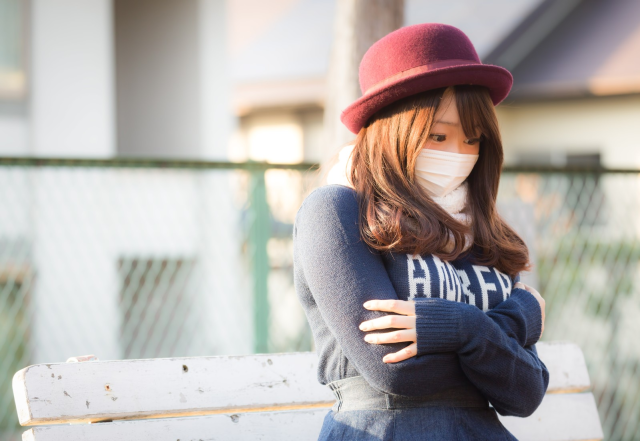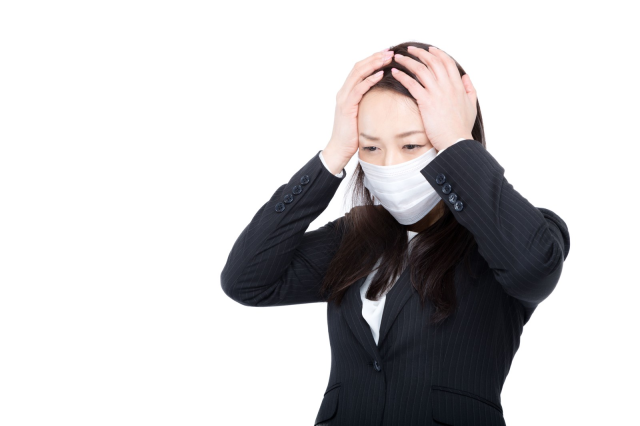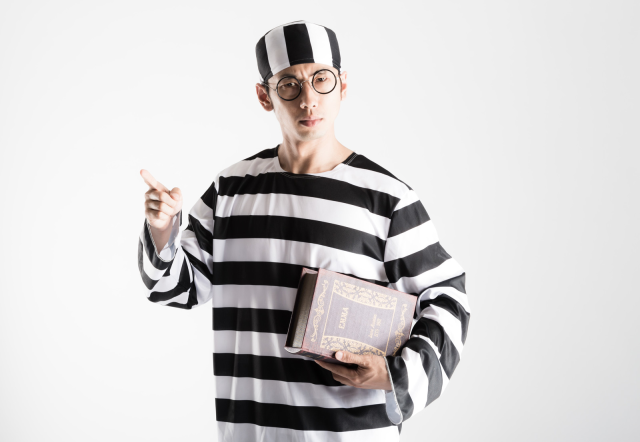
Educator ties theory into why Japanese people wear surgical masks, but not sunglasses, but how solid is his logic?
Just as different cultures have different languages, so too can non-verbal communication differ between countries. This was part of the discussion in a recent lecture at Tokyo Women’s Christian University, given by psychology professor Akihiro Tanaka.
One of Tanaka’s visual aids was a slide labeled “Japanese people’s facial expression comes from their eyes, and Western people’s facial expressions come from their mouths,” as seen in this photo tweeted by Japanese Twitter user @mnishi41.
https://twitter.com/mnishi41/status/1023443014088179712Directly underneath Tanaka’s statement is a row of common Japanese emoticons, representing a wide variety of emotions, and sure enough, all of them have an identical under score for the mouth. Below them is another row of stylized face sketches (meant to be indicative of Western aesthetics) in which the eyes are always the same simple pair of dots, but with vastly different mouths.
Finally, serving as real-world, real-people examples, the slide has a group shot of Japanese people wearing facial masks, and next to it a snapshot of Western women all wearing sunglasses.
The tweet quickly racked up over 140,000 retweets and 385,000 likes. However, looking through the comments, not very many Japanese Twitter users are voicing strong agreement. Instead, most commenters are pointing out that the reasons for the mask/sunglass discrepancy has more to do with differences in socially acceptable fashion between Japan and the West.
The lecture slide implies that people in Japan are generally OK with wearing masks, but not sunglasses, and that’s quite true. However, the major reasons why people in Japan wear masks in the first place are all respiratory system-related, with the most common purposes being to alleviate the effects of hay fever (a major, nationwide problem because of the highly allergenic strain of cedar that grows in Japan) or to avoid passing off or receiving airborne cold/flu germs on Japan’s crowded trains. Sunglasses don’t provide any benefits related to those concerns, so keeping their eyes uncovered is, in the minds of most Japanese people, completely unrelated to whether or not they’re wearing a mask.
Meanwhile, the reason most Japanese people don’t wear sunglasses isn’t for greater communicative effectiveness, but because near-opaque lenses have long had a stigma in Japan as being a sort of face-obscuring pseudo-disguise. Take a look at any public safety pamphlet, and there’s a 90-percent chance that the illustrations showing burglars and conmen will have them wearing sunglasses. All those media depictions eventually seep into real-world mentality, and thus affect fashion decisions.
▼ It’s sort of like how even if you like stripes, you probably wouldn’t put together an outfit like this, since it’d make you look like a convict.
Moving over to the other side of the slide, the reason Westerners don’t wear surgical masks in public isn’t so much because they feel the mouth is the critical body part for non-verbal communication, but because it’s a fashion choice that can legitimately frighten people if they see it outside a hospital. Just last year, some shoppers in the U.K. thought a group of Japanese supermarket patrons who were wearing masks might have been planning some sort of bioterrorism attack.
It’s also worth pointing out that in the cherry-picked photo of Western women wearing sunglasses, they all seem to also be wearing identical low-cut tops made out of red leather. The photo is zoomed in too tightly to see much of the surroundings, but there appears to be a race course fence behind them, so it’s likely they’re not just a group of random everyday Westerners, but models promoting some sort of motorsport event, and so they’re wearing sunglasses because they’re literally standing out in the sun for hours on end.
Written reactions to @ mnishi41’s tweet included:
“Not so sure about the logic on the mask/sunglass thing.”
“I think Westerners are just more likely to wear sunglasses because they have lighter irises and are more sensitive to bright light.”
“Isn’t it just that Japanese people think sunglasses are scary, and Westerners think facial masks are scary?”
“Just think if you wore sunglasses and a mask – no one would mess with you.”
Still, Tanaka raises an interesting point when he shows that Japanese emoticons almost always try to get their point across with the eyes, whereas Western doodles tend to favor mouth reconfigurations. One commenter theorized it might have something to do with characters in anime, Japan’s most popular and influential form of contemporary art, having larger, more expressive eyes then their Western cartoon counterparts. But another likely reason is that Japanese culture largely sees stoicism and serenity as a virtue, which often translates to trying to control, or at least manage, strong emotions.
However, that’s something that’s easier said than done, even for Japanese people. As such, the situation of trying to keep a stiff upper lip, literally, but thinking that your eyes (which have a greater amount of involuntary/subconscious muscle movement) might be giving away your true feelings, is immensely relatable to people in Japanese society. It makes sense that those scenarios would be reflected in the caricature-like visual shorthand of emoticons.
So while the theories that Japanese people wear masks because they feel they can communicate everything they need to with their eyes, and that Westerners will casually slap on a pair of shades because their mouth will do just fine on its own, both sound kind of shaky, there might indeed be a bit of an “art imitates life” aspect to those straight-mouthed Japanese emoticons.
Source: Twitter/@mnishi41 via Hachima Kiko
Top image: Pakutaso
Insert images: Pakutaso (1, 2)
Follow Casey on Twitter, where you won’t be able to see his mouth or eyes, and so he could be up to anything.



 Wearing a white mask will make you less attractive, according to Japanese researchers’ experiment
Wearing a white mask will make you less attractive, according to Japanese researchers’ experiment Breaking research from Japan: wearing a pink face mask makes you more attractive
Breaking research from Japan: wearing a pink face mask makes you more attractive The future is now with full face sunglasses
The future is now with full face sunglasses World-first confirmation that masks can protect you from coronavirus【Video】
World-first confirmation that masks can protect you from coronavirus【Video】 Medi Lift: the Japanese beauty product that promises facelift results without surgery
Medi Lift: the Japanese beauty product that promises facelift results without surgery Japan’s new difficult-to-drink-from beer glass protects your liver, but it’s a brutal experience
Japan’s new difficult-to-drink-from beer glass protects your liver, but it’s a brutal experience How to order snacks on a Shinkansen bullet train in Japan
How to order snacks on a Shinkansen bullet train in Japan Demon Slayer: Kimetsu no Yaiba gets new roller coaster attractions and food at Universal Studios Japan
Demon Slayer: Kimetsu no Yaiba gets new roller coaster attractions and food at Universal Studios Japan New Pokémon ice cream, dessert drinks, and cool merch coming to Baskin-Robbins Japan【Pics】
New Pokémon ice cream, dessert drinks, and cool merch coming to Baskin-Robbins Japan【Pics】 Burger King Japan suddenly adds Dr. Pepper and Dr. Pepper floats to its menu nationwide
Burger King Japan suddenly adds Dr. Pepper and Dr. Pepper floats to its menu nationwide Hello, cosmetics! Clinique teams up with Hello Kitty this summer for first-time collaboration
Hello, cosmetics! Clinique teams up with Hello Kitty this summer for first-time collaboration “The most Delicious Cup Noodle in history” – Japan’s French Cup Noodle wins our heart【Taste test】
“The most Delicious Cup Noodle in history” – Japan’s French Cup Noodle wins our heart【Taste test】 To combat declining birth rate, Japan to begin offering “Breeding Visas” to foreigners
To combat declining birth rate, Japan to begin offering “Breeding Visas” to foreigners Starbucks teams up with Japanese shochu brewery for a whole new coffee experience
Starbucks teams up with Japanese shochu brewery for a whole new coffee experience Studio Ghibli releases giant Totoro plushies in Japan
Studio Ghibli releases giant Totoro plushies in Japan Nintendo history you can feel – Super NES, N64, and GameCube controllers become capsule toys
Nintendo history you can feel – Super NES, N64, and GameCube controllers become capsule toys Starbucks releases a cute Frappuccino and Unicorn Cake…but not in Japan
Starbucks releases a cute Frappuccino and Unicorn Cake…but not in Japan Kyoto Tower mascot termination reveals dark side behind cute Japanese characters
Kyoto Tower mascot termination reveals dark side behind cute Japanese characters McDonald’s Japan’s Soft Twist Tower: A phantom ice cream only sold at select branches
McDonald’s Japan’s Soft Twist Tower: A phantom ice cream only sold at select branches Yabai Ramen: What makes this Japanese ramen so dangerous?
Yabai Ramen: What makes this Japanese ramen so dangerous? Finally! Nintendo Japan expands Switch 8-bit controller sales to everybody, Online member or not
Finally! Nintendo Japan expands Switch 8-bit controller sales to everybody, Online member or not Japanese government wants to build luxury resorts in all national parks for foreign tourists
Japanese government wants to build luxury resorts in all national parks for foreign tourists 10 things you should buy at 7-Eleven in Japan
10 things you should buy at 7-Eleven in Japan Studio Ghibli releases anime heroine cosplay dresses that are super comfy to wear
Studio Ghibli releases anime heroine cosplay dresses that are super comfy to wear Woman charged for driving suitcase without a license in Osaka
Woman charged for driving suitcase without a license in Osaka Studio Ghibli unveils My Neighbour Totoro miniature house model
Studio Ghibli unveils My Neighbour Totoro miniature house model Kyoto experiencing problems with foreign tourists not paying for bus fares, but not on purpose
Kyoto experiencing problems with foreign tourists not paying for bus fares, but not on purpose Fighting mild hunger with a Japanese soda that turns into jelly in the stomach【Taste test】
Fighting mild hunger with a Japanese soda that turns into jelly in the stomach【Taste test】 Studio Ghibli’s Howl’s Moving Castle tapestry unveiled in Japan for first time
Studio Ghibli’s Howl’s Moving Castle tapestry unveiled in Japan for first time McDonald’s new Happy Meals offer up cute and practical Sanrio lifestyle goods
McDonald’s new Happy Meals offer up cute and practical Sanrio lifestyle goods Sales of Japan’s most convenient train ticket/shopping payment cards suspended indefinitely
Sales of Japan’s most convenient train ticket/shopping payment cards suspended indefinitely Sold-out Studio Ghibli desktop humidifiers are back so Totoro can help you through the dry season
Sold-out Studio Ghibli desktop humidifiers are back so Totoro can help you through the dry season Japanese government to make first change to romanization spelling rules since the 1950s
Japanese government to make first change to romanization spelling rules since the 1950s Foreigner’s request for help in Tokyo makes us sad for the state of society
Foreigner’s request for help in Tokyo makes us sad for the state of society Ghibli founders Toshio Suzuki and Hayao Miyazaki contribute to Japanese whisky Totoro label design
Ghibli founders Toshio Suzuki and Hayao Miyazaki contribute to Japanese whisky Totoro label design Doraemon found buried at sea as scene from 1993 anime becomes real life【Photos】
Doraemon found buried at sea as scene from 1993 anime becomes real life【Photos】 Tokyo’s most famous Starbucks is closed
Tokyo’s most famous Starbucks is closed Princesses, fruits, and blacksmiths: Study reveals the 30 most unusual family names in Japan
Princesses, fruits, and blacksmiths: Study reveals the 30 most unusual family names in Japan Japanese police officers officially allowed to wear sunglasses, buy drinks at convenience stores in Shimane
Japanese police officers officially allowed to wear sunglasses, buy drinks at convenience stores in Shimane Hyper-detailed anime girl masks are here to solve, possibly create your fashion problems【Photos】
Hyper-detailed anime girl masks are here to solve, possibly create your fashion problems【Photos】 Domino’s Pizza Japan offers discount to customers in masks for limited time
Domino’s Pizza Japan offers discount to customers in masks for limited time Best Masknist Award 2020 held to honor pioneers in Japanese mask fashion
Best Masknist Award 2020 held to honor pioneers in Japanese mask fashion Japanese airline leaves passenger behind at rural island airport after he refuses to wear mask
Japanese airline leaves passenger behind at rural island airport after he refuses to wear mask Brazilian man spends over $3,000 on plastic surgery to look ‘Korean’
Brazilian man spends over $3,000 on plastic surgery to look ‘Korean’ Sailor Moon cloth masks are here to protect you from germs the magical girl way!
Sailor Moon cloth masks are here to protect you from germs the magical girl way! The Cat in the Surgical Mask – Twitter user plans to raise money for charity with feline figurine
The Cat in the Surgical Mask – Twitter user plans to raise money for charity with feline figurine What happens when our reporters show up to work dressed like their fathers?
What happens when our reporters show up to work dressed like their fathers? We test out Uniqlo’s “new and improved” Airism mask for form, fashion, and function
We test out Uniqlo’s “new and improved” Airism mask for form, fashion, and function Uniqlo sister brand GU’s masks have one advantage over Uniqlo’s Airism masks
Uniqlo sister brand GU’s masks have one advantage over Uniqlo’s Airism masks Mask rules in Japan have changed…so are people still wearing them?
Mask rules in Japan have changed…so are people still wearing them? Studio Ghibli’s two most famous character masks come into the real world with mini o-men【Photos】
Studio Ghibli’s two most famous character masks come into the real world with mini o-men【Photos】 We try cooling our face masks five different ways, and don’t recommend doing any of them
We try cooling our face masks five different ways, and don’t recommend doing any of them Mask vending machines pop up at train stations around Taiwan to help commuters avoid fines
Mask vending machines pop up at train stations around Taiwan to help commuters avoid fines
Leave a Reply